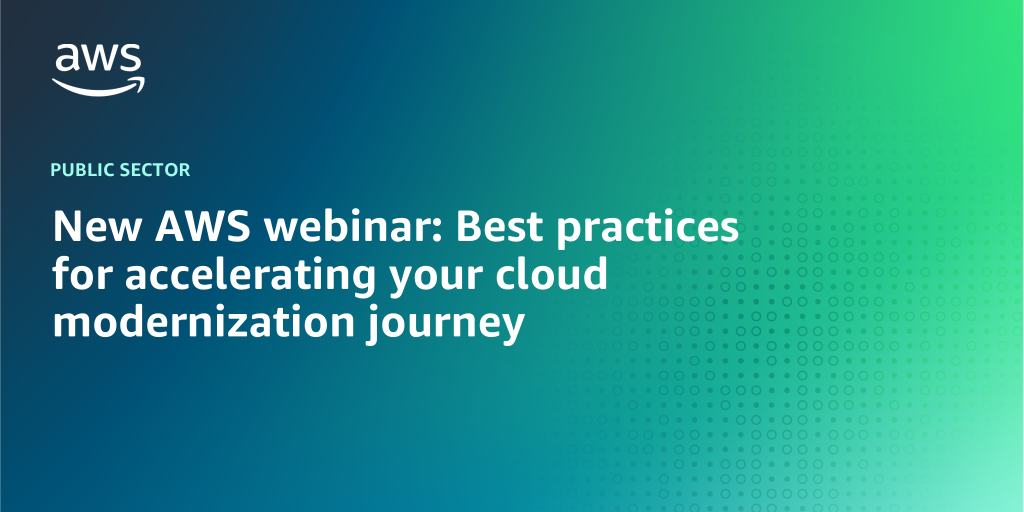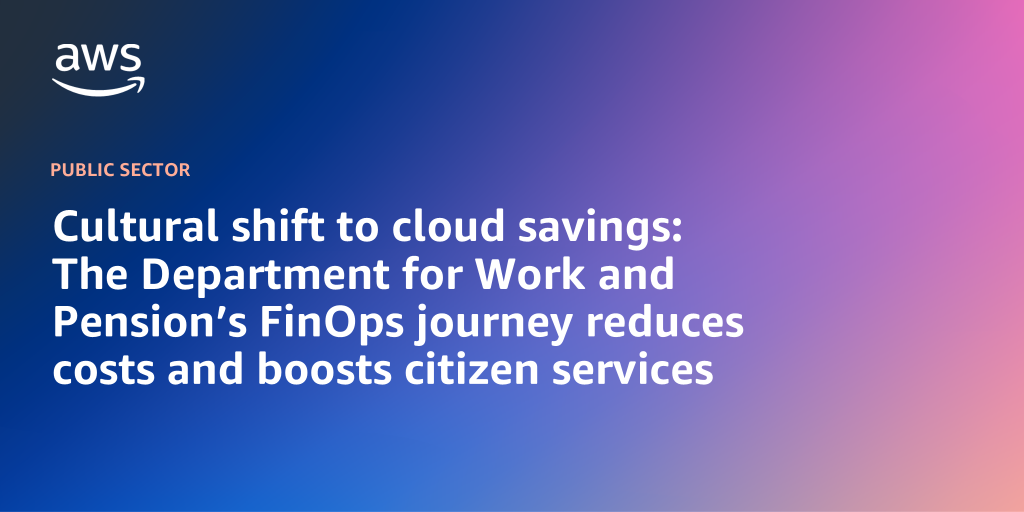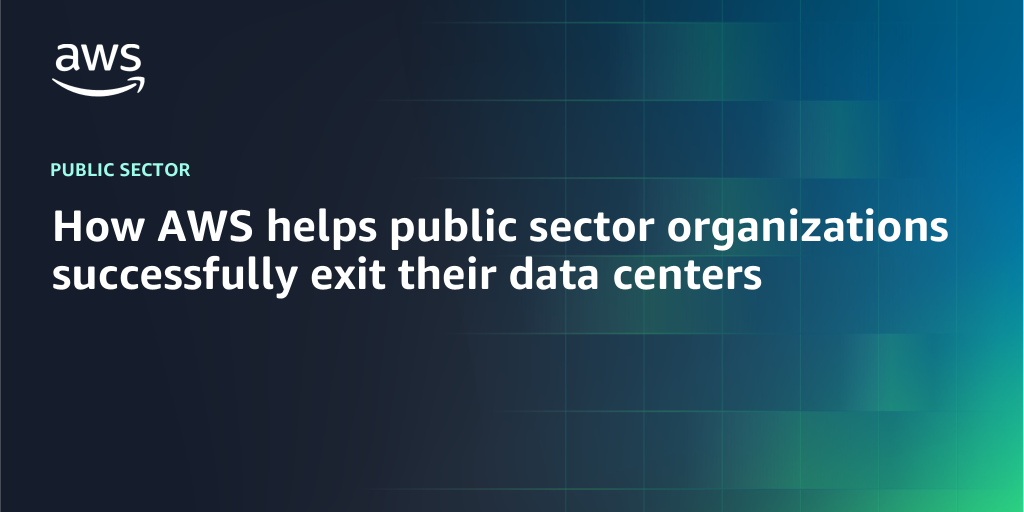AWS Public Sector Blog
Tag: cloud adoption
New AWS webinar: Best practices for accelerating your cloud modernization journey
If your public sector organization has been weighing the benefits of cloud migration against concerns about security, costs, skill gaps, or the effort required, a recent BrightTALK webinar offers a roadmap forward. In “Best Practices: Accelerating Your Cloud Modernization Journey,” Amy Wilson, migration and modernization specialist leader at Amazon Web Services (AWS), joined Scott Sinclair, practice director at Enterprise Strategy Group, to share practical strategies for migrating and modernizing on the AWS Cloud. Read this post to learn more.
Cultural shift to cloud savings: The Department for Work and Pension’s FinOps journey reduces costs and boosts citizen services
In today’s climate, there is a need for government entities to achieve cost optimization while maintaining high standards of service delivery and data security. The Department for Work and Pensions (DWP), the United Kingdom’s largest public service organization, implemented AWS Cloud Financial Management (FinOps) best practices, and reduced its cloud consumption costs by 23 percent in fiscal year 2023-24, resulting in annual savings of GBP £8.7 million.
How AWS helps public sector organizations successfully exit their data centers
Successfully managing a data center exit requires careful planning and experienced advisors. AWS can help you evaluate your current environment and assets, build a comprehensive business case, customize a migration strategy for your facilities, hardware, and IT workloads, maximize the value of your existing assets, and address other unique data center challenges. Read this post to learn more.
Defining organizational roles with a RACI matrix
This post is part four of a four-part series that addresses how a Cloud Center of Excellence (CCOE) can be a viable solution to address the challenges of digital transformation. In this post, we discuss a framework for defining organizational areas of responsibility.
Enabling AI leadership in the age of government efficiency
Global leaders are convening in Germany this week at the annual Munich Security Conference (MSC) to discuss key foreign policy and security challenges. Amid these discussions, one thing is clear: global leadership increasingly hinges on technological progress. In particular, the rapid progress of artificial intelligence (AI) presents an extraordinary opportunity for transformative innovation. For the U.S. government, this moment marks a crucial inflection point: embrace bold modernization of digital infrastructure and AI investment or risk being outpaced by global competitors.
Establishing a robust cloud platform and operational model through the CCoE
This post is part three of a four-part series that addresses how a Cloud Center of Excellence (CCoE) can be a viable solution to address the challenges of digital transformation. In this post, we address the three technical perspectives of the Amazon Web Services Cloud Adoption Framework (AWS CAF). While the business, organizational, and governance perspectives of the AWS CAF are crucial, the CCoE must also focus on the technical capabilities required to build and operate a cloud environment that meets the organization’s needs.
Aligning cloud adoption with business outcomes, organizational capabilities, and governance through a CCoE
This post is part two of a four-part series that addresses how a Cloud Center of Excellence (CCoE) can be a viable solution to address the challenges of digital transformation. Part two of the series focuses on the three nontechnical perspectives of the AWS Cloud Adoption Framework (AWS CAF). Successful cloud transformations require a holistic approach that goes beyond just the technical aspects, so the AWS CAF provides a comprehensive framework to guide organizations, covering the business, organizational, and governance perspectives.
The need for a Cloud Center of Excellence in digital transformation
Digital transformation initiatives often struggle to achieve their intended goals, with McKinsey and Company reporting that up to 70 percent fail to fully meet objectives. Challenges like time delays, cost overruns, and incomplete functionality can undermine the success of these efforts. This post is the first in a four-part series that addresses how a Cloud Center of Excellence (CCoE) can be a viable solution to address these common pitfalls. Part one focuses on what a CCoE is and how it, combined with the Amazon Web Services Cloud Adoption Framework (AWS CAF), can help your enterprise with its digital transformation.
Working backwards from generative AI business value in the public sector
Generative artificial intelligence (AI) has captured the imagination of organizations across industries, promising to revolutionize workflows and drive innovation. As public sector entities explore this transformative technology, a critical challenge emerges: identifying and prioritizing high-value use cases that align with specific business objectives and delivering measurable outcomes. In this post, we present an Amazon Web Services (AWS) framework to help public sector organizations navigate generative AI adoption and unlock its true potential.
Peraton consolidates data centers and migrates to AWS
Peraton is a mission capability integrator and delivers enterprise IT around the world. They are also an Amazon Web Services (AWS) Premier Tier Services Partner with competencies in government, DevOps, and migration. Peraton’s IT infrastructure and technology strategy are designed to support the delivery of mission-critical services and solutions to its customers at a global scale. In this post, we explore how Peraton used AWS to migrate and build out a virtual data center in AWS GovCloud (US) Regions within a six-month time frame with an advanced and secure end-state architecture.









